#Knýtlinga saga
Explore tagged Tumblr posts
Text
Niečo málo o Černobohovi
youtube
Ďurov besovský boh, strážca krvavého ohňa, pán záhrobnej svorky vlkov, hrubá záplata na hrubé vrece nepriateľských potvor a zvrhlých božských súrodencov je postavička... Kontroverzná.
* Prvá zmienka je datovaná do 12. storočia a v oblasti Polabských Slovanov ju zaznamenal saský kňaz Helmold Bosau v Chronica Slavorum (Kronika Slovanov).
"Slované mají také [jednu] zvláštní pověru: při hostinách a pitkách nechávají kolovat misku, nad níž pronášejí slova – a nemůžu říci, že slova posvěcení, nýbrž znesvěcení[pozn. 1] – ve jménu bohů dobrých i zlých, protože vyznávají že všechen zdar a štěstí řídí dobrý bůh, zlý bůh pak všechno neštěstí. Proto také zlého boha svým jazykem nazývají „ďábel“ či „Černoboh“, to jest černý bůh." (Citát z wiki)

Saské pokresťančovanie týchto nespratných susedov prebiehalo už od druhej polovice 10. storočia a výklad videného pochádza od predstaviteľa v podstate cudzej okupačnej sily, takže je otázne nakoľko ide o predstavu pôvodnú a nakoľko o kríženca kresťanského dualizmu dobro-zlo s domácimi tradíciami. Je dôvod domnievať sa, že ani nešlo o boha, ale skôr o stelesnenie smoly lepiacej sa na päty.

* Niekedy ešte býva stotožňovaný s Čiernohlavom - Tjarnoglófim zo ságy Knýtlinga z 13. storočia, ktorá okrem dejín dánskych vladárov spomína aj jedno z posledných slovanských svätíšť na Rujáne a miestne modly.
"The fifth god was called Pizamar from a place called Jasmund, and was destroyed by fire, There was also Tjarnaglófi, their god of victory who went with them on military campaigns. He had a moustache of silver and resisted longer than the others but they managed to get him there years later. Altogether, they christened five thousand on this expedition. (Citát z wiki)
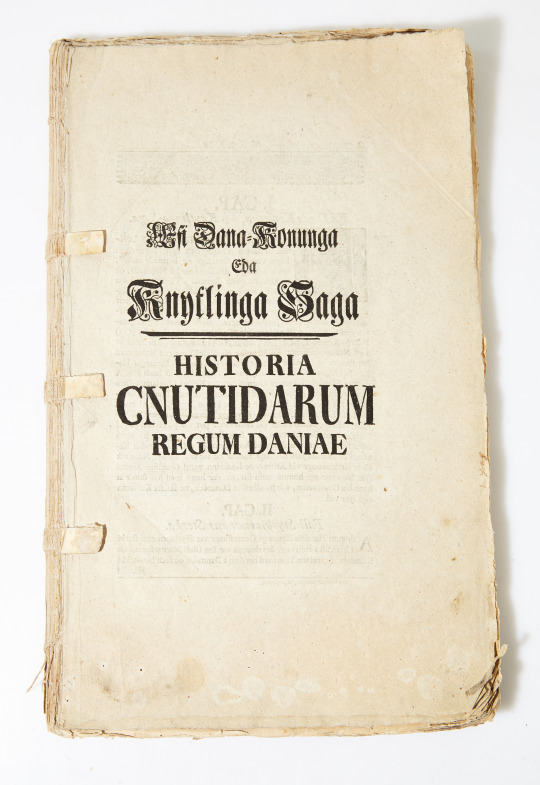
Nevraví nám o ňom ktovieako veľa - boh víťazstva, modla so striebornou bradou nosená do boja, zničeniu vraj odolával dlhšie ako iní. A čo sa akademických úvah o Tjarnoglófim týka, sú rôznorodé - iná podoba Triglava, Jarovíta, Perúna, alebo dokonca na základe porovnávania "tjarn" so slovom "tŕň" aj nositeľ tŕňovej koruny istého Nazaretského synkreticky šprajcnutého do predstáv o domácich ochrancoch pred dobyvateľmi.
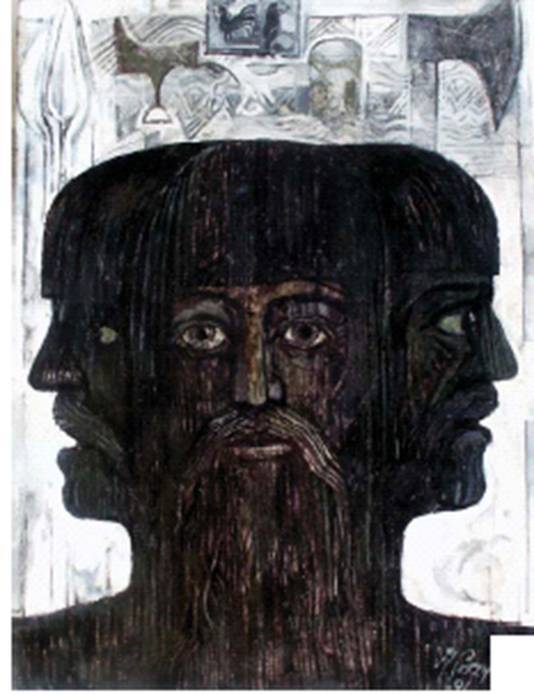
K slovu sa dostala aj archeológia a Čierny sa ako vojnové božstvo vyskytol ešte inde. * Ján Kollár - kňaz, básnik, jazykovedec a snaživý (ikeď nie až tak exaktný) historik v 19. storočí účinkujúci uprostred vzmáhajúcich sa nacionalistických pretekov o to, čí národ bol najsamprvý, najkultivovanejší a na aké územia a úctu má nárok, si v ňom našiel dávnovekého burcovateľa slovanskej bojovnosti v obrane pred kresťanstvom násilne vnucovaným z Nemeckých zemí. Zložil o ňom aj pár veršov v Slávy dcére.

Jeho nález z Babenbergu, ktorým svoje úvahy podkladal, však dopadol neslávne. O starých sochách pred chrámom sv. Petra a Juraja na Michalskej hore sa tradovala legenda, že sú obývané zlovoľnými duchmi, čo kedysi po nociach sabotovali snahy stavbárov vztýčiť tamojší svätostánok (spoiler - vyhrali stavbári a kostol stojí). Keď na nich Kollár s mladomanželkou zbadal ryhy pripomínajúce písmená, nadchol sa myšlienkou, že by mohlo ísť o slovanské runy. A tak sa v 30. rokoch 19. storočia zrodil príbeh o Černobohových levoch, modlách odcudzených vierozvestcom Otom Bamberským. Zlanáril naň aj (o poznanie profesionálnejšieho) Pavla Jozefa Šafárika a táto správa dorazila až do intelektuálnych kruhov v Rusku. Hypotéza dostala trhliny, keď jeden poľský bádateľ na sochách našiel nápis Wallhalah (germánske sídlo bohov a záhrobie pre vyvolených bojovníkov) a definitívne sa zrútila, keď sa usúdilo, že sa to len nejaký okoloidúci na pamiatku podpísal (!!!a preto sú bytostne dôležité knihy návštev!!!) a/alebo poveternostné živly dali naštrbenej hornine zabrať. Viac na - https://historylab.dennikn.sk/dlhe-19-storocie/omyl-jana-kollara/

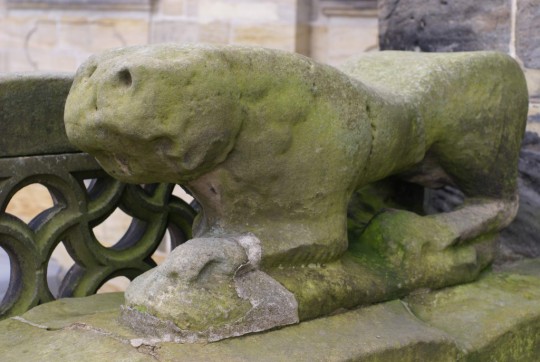

* Podobne obišiel aj Kollárom inšpirovaný nešťastník od Skalska, Václav Krolmus - kňaz, zberateľ etnológ a priekopník terénnej archeológie v zemi koruny českej.

Ten sa v 50. rokoch 19. storočia nádejal, že v pivnici Josefa Kabeša našiel runový kameň podľa nápisu vyzerajúceho ako výraz "raksa" zasvätený raráškovi a tým pádom indickému rákšašovi (indoeurópanizmus a Slovania, veľká téma, veľa hľadania starých vzájomností), prípadne ešte aj blízkovýchodnému Baalovi. O nález sa so širšou verejnosťou podelil v Poslední božiště Černoboha s runami na Skalsku, v kraji Boleslavském, v Čechách. Odhalenia, že ide o komoru z obdobia renesancie a pukliny v jeho kameni sú prirodzeného pôvodu, sa už nedožil. Lokalita však bola osídlená už v praveku a je zdrojom rôznych nálezov.
Viac na - https://isad.npu.cz/obec-skalsko-2218 https://sever.rozhlas.cz/vaclav-krolmus-romantik-s-motyckou-7795354?fbclid=IwZXh0bgNhZW0CMTAAAR3YhLLQPvdhK6afdIW8lcGYH6qzfmWybwmqSuzdXTN0114oKHM2OzbH5nc_aem_AY33qemnq9YY0C1Ye3A--g2r6saU2dNEZPg61kxvhA-1WpSjtZy7kynU-Q_Zsp_dbsbDF345SO_dLkcLWBSeMCUl

* Mytológia, aj tá prežívajúca vo fikcii a popkultúre miesto praktizovanej viery, je však živý proces. Sútok nespočta potôčikov, divoké riečište s množstvom bočných ramien, prúd podzemnej vody tu tryskajúci na povrch, tam zase miznúci v skrytých hlbinách, spenená riava meniaca svoje koryto podľa ľubovôle, chutiaca všetkým možným, o čo sa obtrela. Každá komunita a každá generácia s ňou nakladá trochu inak. Podľa toho, čo rezonuje v ich životoch, čo zisťujú o okolitom svete, čo sa snažia dosiahnuť. Môžeme si zakladať na presnosti toho ktorého zaznamenaného prerozprávania, hľadať pramene toho ktorého prvku, body styku s inými vplyvmi, prirodzené prekážky, čo zmenili jej tok. A môžeme samozrejme aj razantne kritizovať tú ktorú verziu a jej mieru nadväznosti, či výživnosť, môžeme jej konkurovať vlastným výkladom. Ale nemôžeme ju zahatať a zmraziť. Či už bol Černoboh len slovným obratom, modlou celkom iného boha, alebo faktickou entitou na prelome pohanstva a kresťanstva, postupne sa stal aj čímsi ďalším. A Ďurov príspevok do všeobecného povedomia je dosť slušným základom pre ďalšie zaujímavé zákruty.
Nech teda oheň na Kančej hore planie vytrvalo a vytie vlčích besov znie doďaleka.

#juraj červenák#Černokňažník#Černoboh#Ján Kollár#Pavol Jozef Šafárik#Václav Krolmus#Babenberg#Skalsko#archeology#history#early medieval#late modern#high medieval#Chronica Slavorum#Knýtlinga saga#Czarnobog#Czarnoglav#Tjarnoglófi#Slovanská mytológia#music#Slavic mythology#Slovanskí bohovia a bytosti#Slavic deities#essay?#zamyslenie#sa mi to čertovsky natiahlo#Youtube
1 note
·
View note
Text
RUGIEVIT (západní Slované; Saxo Grammaticus, Knýtlinga saga) - válečný sedmihlavý bůh uctívaný v Korenici (patrně Garz), kde měl ve 12. století svůj chrám. Dubový idol měl u pasu sedm mečů, osmý držel v pravé ruce. Socha byla vysoká asi 3 m ... Vlaštovky, jež hnízdily na soše, se staly dotykem s ní tabu, takže jejich hnízdo ani trus nebyly ze sochy odstraněny. ... jako vládce-suverén byl nejspíše předchůdcem Svantovíta. Posvátným zvířetem mu byl bělouš, obdobně jako v případě Svantovítově ... ~ RUYEVIT (Western Slavs; Saxo Grammaticus, Knýtlinga saga) - a seven-headed war god worshiped in Charenza (probably Garz), where he had his temple in the 12th century. The oak idol had seven swords at its waist, the eighth held in its right hand. The statue was about 3 m high … Touching the swallows that nested on the statue became a taboo, so neither their nests nor their droppings were removed from it. … as a ruler-sovereign, he was most likely the predecessor of Svantovit. His sacred animal was a white horse, similarly as in the case of Svantovit…
Encyklopedie slovanských bohů a mýtů ~ Encyclopedia of Slavic Gods and Myths (Naďa & Martin Profantovi)
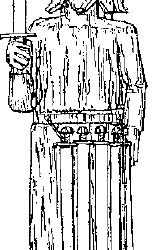
#Slavs#Gods#Ruyevit#Svantovit#sacred animals#swallows#horse#Charenza#Saxo Grammaticus#Knýtlinga saga#Encyklopedie slovanských bohů a mýtů#Naďa Profantová#Martin Profant#V#books#quotes#When one sword isn't enough#get seven more.
0 notes
Note
1, 10, 13, and 22 for the history ask? C:
1: Favourite historical person
I already answered this one here. Short answer: Magnus Hirschfeld.
10: Pieces of art ( paintings, sculpures, lithographies, ect.) related to history you like most ( post an image of them)
It's probably no secret that I have a fondness for homoerotic neoclassical art, lol
Aesthetically I have other art movements that speak to me more (post-impressionism, for instance) but what fascinates me about neoclassical art is also the whole... god, like European obsession with the classics and how that intersects with different aspects of society and how like, there's a huge difference between studying what the classical world was actually like versus what people through history have thought the classical world was like and how that has been used rhetorically at different points in time and....!
I'm going to go with That One Minotaur Sculpture Where It Looks Like Theseus Is Riding Him (ie Theseus and the Minotaur, Antonio Canova, 1781-82). Aside from the pose being both amusing and genuinely erotic, the fact that it is eroticised in this way also talks to contemporary art theory and like, the homoerotic as part of the artistic ideal in itself and how classical subject matter was used to filter that?? Idk, there's just a lot going on with that sculpture and the culture surrounding its creation lol.
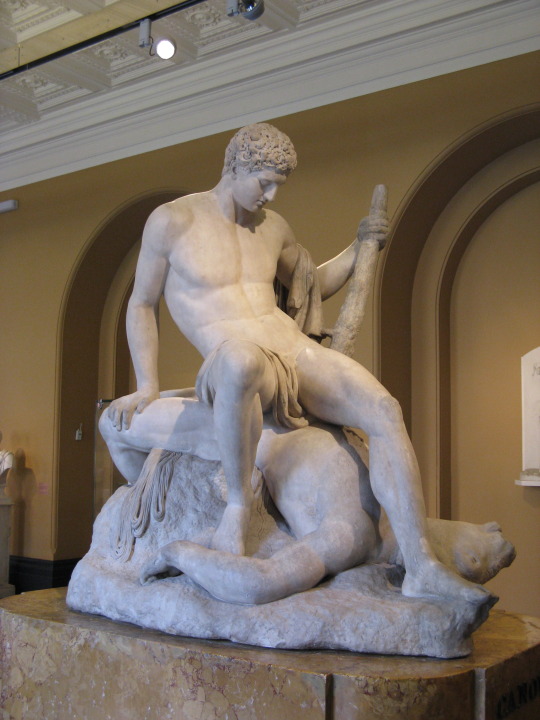
13: Something random about some random historical person in a random era
Ah, erhm... Gah, I find this one difficult, I'm more about broad movements than specific people...
According to her autobiography (which I have only read random snippets of, it can be found here in Danish, German, British English and American English), when Lili Elbe and Gerda Wegener first arrived in Paris, they stayed in the hotel room Oscar Wilde had been staying in when he died and they were inspired to reread a few of his works.
22: Random historical fact about the place you are at the moment
The first written reference to the village that would become Copenhagen in historical sources is in Knýtlinga saga, where it's referred to as Höfn or Havn (literally "Harbour").
Old Norse Sveinn flýði fyrst til Sjólands með þat lið, er undan hafði komiz ok honum vildi fylgja, en Magnús konungr sigldi þegar eptir honum ok kom at Sveini, þar sem heitir í Höfn; lá hann þar fyrir fám skipum; (source) Danish Svend flygtede først til Sjælland med de folk, der var undkommet og ville følge ham, men kong Magnus sejlede straks efter ham og traf Svend på det sted, der hedder Havn; dér lå han med et fåtal af skibe. (source) Quick English translation of the Danish by me Svend first fled to Zealand with those of the survivors who wanted to follow him, but King Magnus sailed after him at once and met Svend at the place that is called Havn; there he lay with a small number of ships.
This reference seems to check out with archaeological data as a village located around where central Copenhagen is today, from what I've read.
Of course the more famous early reference to Copenhagen is the second one, where Bishop Absalon was granted dominion over a slew of areas by the pope with "Hafnia" among them.
__
Thanks for asking!
2 notes
·
View notes
Photo



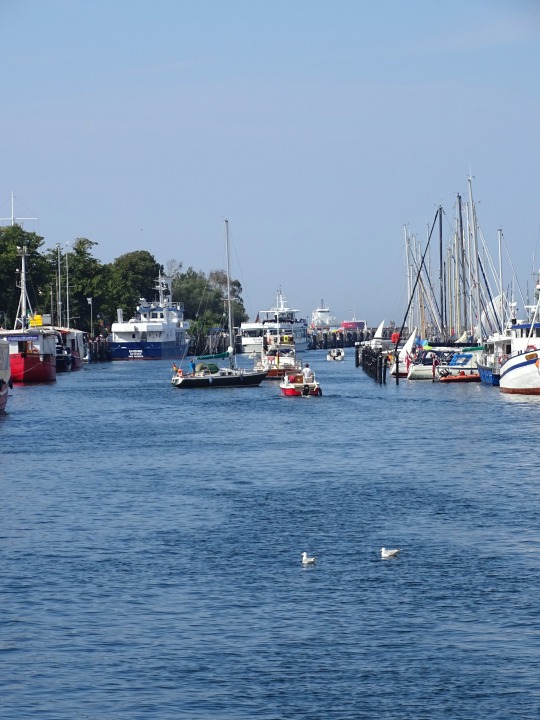




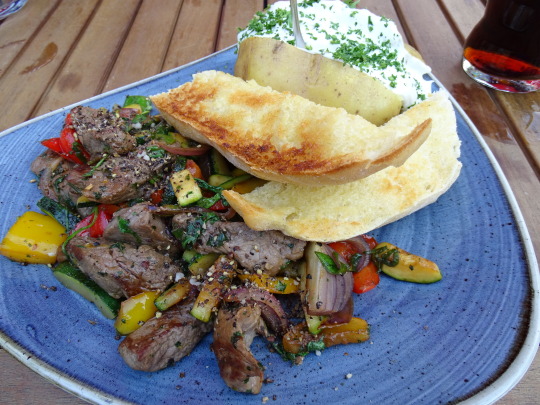
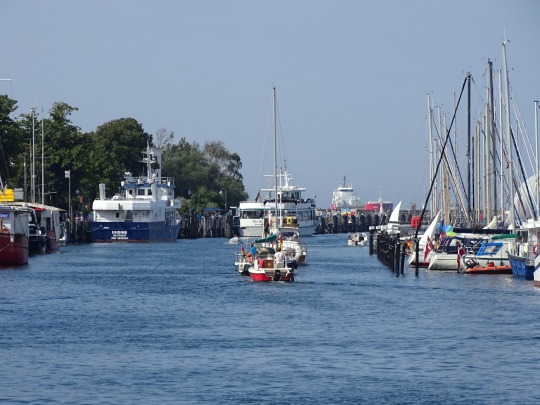
Warnemünde (No. 6)
The Warnow is a river in the state of Mecklenburg-Vorpommern in Germany. It flows into the Baltic Sea near the town of Rostock, in its borough Warnemünde.
The source of the Warnow is in Grebbin, a small village 10 kilometres (6 mi) north of Parchim, at the western end of the Mecklenburg Lake District. It flows north through Sternberg, Bützow and Schwaan before reaching Rostock.
In 2003, Germany's first modern toll road, the Warnow Tunnel was opened, connecting the port of Rostock on the east bank with the west bank of the river.
There is in Indaial, a city of Brazil, a river with the same name. When Hermann Blumenau came to America and started to explore the country, he gave this name to the river in the Brazilian city because it resembled the river in Germany.
The origins of the name are uncertain. Recent work suggests a non-Indo-European (perhaps specifically Hattic) element ar(i)n ('spring, stream'), giving rise to the Slavic form Warnow through the prosthesis of /v-/. The Warnabi, a medieval Slavic tribe, probably derived their name from the Warnow. The ancient geographer Claudius Ptolemäus mentioned a river around 150 CE whose location would correspond to the Warnow, which he called the Χαλοῦσος (Latin: Chalusus). The river also appears in a few medieval sources under names along the lines of Goderak: Guðakrsá ('God-field's river') in Knýtlinga saga chapter 119 and Saxo Grammaticus's Gesta Danorum in the phrase ad Gudacram amnem ('to the river Gudacra'; xiv.25.16). Meanwhile, Arnold of Lübeck's Chronica Slavorum mentions that Berno, Apostle of the Obotrites 'pro Gutdracco Godehardum episcopum venerari constituit' ('instituted the veneration of Bishop Godehard in place of Gutdracco'). This Gutdracco is otherwise unknown, and there is some suspicion that the name of this god arose as a folk-etymologisation of the name of the river.
Source: Wikipedia
#Westmole#Alter Strom#Warnemünde#Hanseatic City of Rostock#Germany#Rostock#Mecklenburg-Vorpommern#Mecklenburg-Western Pomerania#travel#Baltic Sea#Ostsee#cityscape#boat#ship#tourist attraction#vacation#summer 2020#architecture#Warnow river#Steakpfanne#Tartufo#ice cream#restaurant#Fabelhaft#food#dessert#original photography#landmark
7 notes
·
View notes
Photo

Chernobog
First mentioning of this deity comes to us from a German priest Helmold. When he describes customs and beliefs of Polabian Slavs in his 12th century "Chronica Slavorum", mentioning:
Est autem Slavorum mirabilis error; nam in conviviis et compotacionibus suis pateram circumferunt, in quam conferunt, non dicam consecracionis, sed execracionis verba sub nomine deorum, boni scilicet atque mali, omnem prosperam fortunam a bono deo, adversam a malo dirigi profitentes. Unde etiam malum deum lingua sua Diabol sive Zcerneboch, id est nigrum deum, appellant.
translated:
The Slavs, too, have a strange delusion. At their feasts and carousals they pass about a bowl over which they utter words, I should not say of consecration but of execration, in the name of the gods—of the good one, as well as of the bad one—professing that all propitious fortune is arranged by the good god, adverse, by the bad god. Hence, also, in their language they call the bad god Diabol, or Zcerneboch, that is, the Black God.
(Tschan, Francis Joseph, The Chronicle of the Slavs by Helmold, New York: Columbia University Press, 1935, p. 159.)
Other mentioning of the same deity are dated to 16th century, and they are using Helmold's claims as a main source. Other than those, we have Knýtlinga saga from 13th century which mentions one deity called Tjarnaglofi. That name, which can be understood as slavic Crnoglavi, means "black headed" and can be connected to earlier attested Zcerneboch, which, as mentioned, means "black god" in modern Slavic languages Crnobog/Czarnobóg/Chernobog.
However, when Helmold writes about Chernobog being an "evil god" and identify him as the "Devil" we can undoubtedly see his christian interpretation of the Slavic believes, which isn't strange if we keep in mind that Helmold is a Roman Catholic priest. If we look into name of Chernobog closely we can see that the first part of his name, "cherno" indeed means "black". But to ancient Slavs as well as other Indo-Europeans, that color does not have strict moral connotation, it is more often related to a chtonic aspect. Later part "-bog" can mean deity, but also it can mean well-being, wealth, or a good fortune. This allows us to recognize Chernobog as a local name for the Slavic deity of other world and giver of wealth - Veles.
Text by: Dušan Božić
Sources:
Веселин Чајкановић - „О врховном богу у старој српској религиј“, Српска књижевна задруга, Београд, 1994
Myroslava T. Znayenko - "On the concept of Chernebog and Bialobog in Slavic Mythology", Acta Slavica Iaponica Vol. 11, 1993, pp. 177-185.
Александар Лома - „Пракосово: словенски и индоевропски корени српске епике“, Балканолошки институт САНУ, Београд, 2002
Picture: Игорь Ожиганов - Чернобог (Igor Ozhiganov - Chernobog)
213 notes
·
View notes